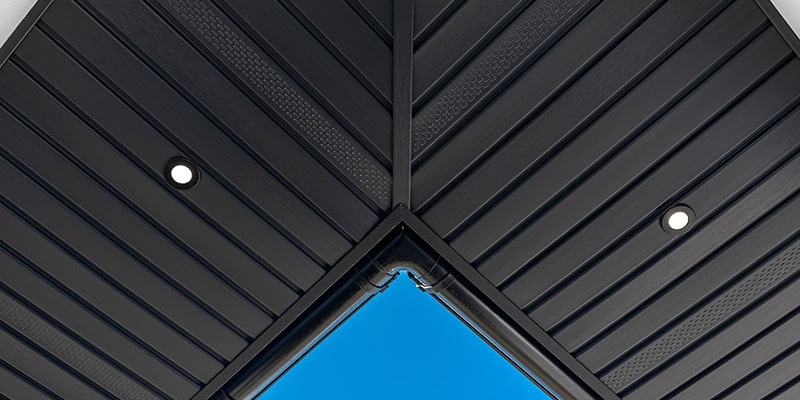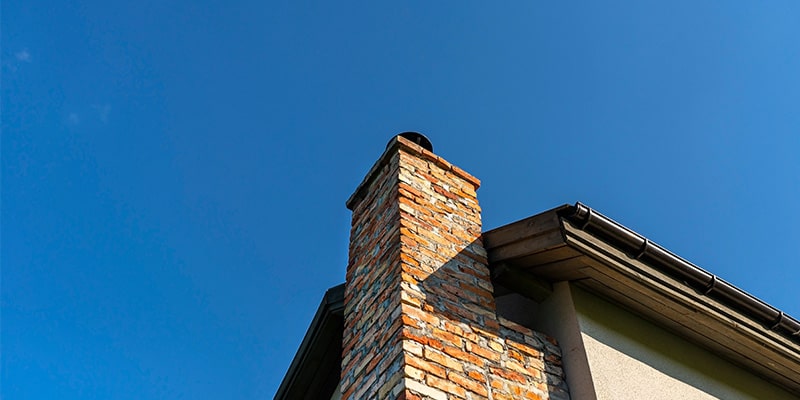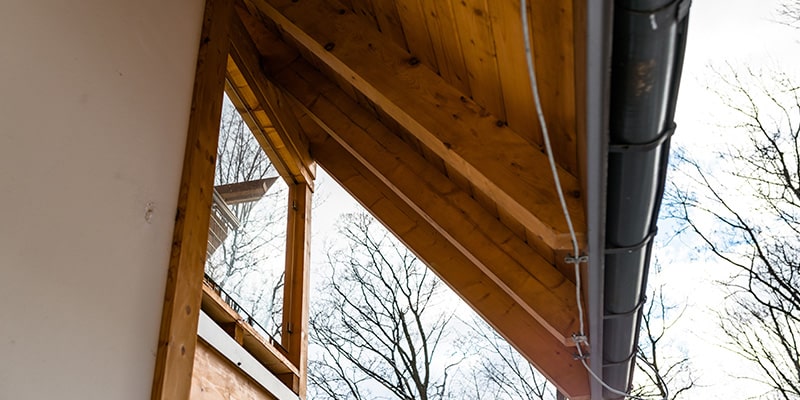What are Eaves?

Eaves are established when the roof rafters protrude over the edge of the property to equally distribute and maintain the roof's weight
Beyond their incredible practical benefits, you’ll find that the roof’s eaves also add a great deal of kerbside appeal. That’s why it’s so important to keep them in good shape and even more important to keep them in mind if you're contemplating adding to or modifying your roofing system.
Unsure whether you have them? Check the edge of your roof - if you notice a triangle form extending from the wall then you have Eaves. Flat-roofed buildings typically do not have eaves; however, some may have eaves that extend straight out to shelter the outer walls.
In this article, we will look at the benefits of Eaves and what they can offer your home, as well as explain how to patch and repair your Eave when the time comes.
Contents
- What Makes Up the Eaves?
- What are the Benefits of Eaves?
- What are the Types of Eaves?
- How to Install New Eaves?
- How to Remove Damaged Eaves
- Does My Soffit Contain Asbestos?
What Makes Up the Eaves?
Eaves are composed of two significant elements, the Soffit, and the Fascia:
Soffit
Soffits can be found on the bottom of a pitched roof as well as below the Eaves, it is the layer beneath the Eave that connects the furthest edge of the roof to the houses outside wall.
There are 3 main types of Soffits:
- Solid Soffit – Offering a stunning finish to your roof
- Vented Soffit – Makes use of airflow to prevent the build-up of moisture & save money on energy bills
- Hollow Soffit – Cost-effective solution that still provides a great looking roof

Fascia
Fascia is the vertically connected straight planks at the bottom of your roof. They are the section of the roof which is joined to the exterior wall at the point of junction. The Fascia also helps to support your guttering.
There are 4 common materials of Fascia:
- Aluminium – Establishes an impermeable barricade around your home that will survive for decades with little repair
- Unplasticized Vinyl (uPVC) - A robust material that does not rot or distort, is long-lasting and can tolerate adverse weather conditions
- Vinyl - Simple to assemble and flexible enough to stretch and shrink with the sun's rising and setting
- Wooden – They are aesthetically pleasing, especially with more dated homes and buildings, and are also environmentally friendly thanks to their biodegradable nature
What are the Benefits of Eaves?
|
Benefits |
Description |
| Prevents Water Damage | The installation of Eaves can protect the sides of your house from water damage as it provides a platform for the water to run off- stopping it from falling down your walls and creating unsightly watermarks or cultivating moss/algae. |
| Conserve Energy | Eaves with the correct depth may help shade a house in the summer while allowing warm light in the winter. A wide overhang will also permit additional winter sunlight to enter a home, helping you to rely less on central heating and artificial lights. |
| Maintains wall cleaniness | Eaves preserve the outside of your home for a long period of time, they contribute to lowering the expense of maintenance of your home's outer walls. They also work towards preventing efflorescence and can save you money in the long run |
| Protects furniture from sunlight | Eaves are ideal for rooms with wooden windows and doors, which may be damaged by prolonged exposure to direct sunlight. |
What are the Types of Eaves?
- Abbreviated Eves - Has a cut-off that runs parallel to the building's side
- Boxed-in Eaves - Rafters are connected to this roof & the roof sides connect to the building
- Exposed Eaves - Rafters are observable & provided beneath the roof region
- Soffit Eaves - Soffits are fastened to the side of the Eave & then to the building
Whilst each of these types provides a unique look and feel, exposed, soffit and boxed-in eaves also typically feature air vents. This helps ensure adequate airflow through the roof space – preventing moisture from settling and creating an environment for moss and rot build-up.
How to Install New Eaves
You will know when the time comes to replace your Eaves. Apart from obvious mould and dampness, you should also look for signs of poor drainage, as well as the Eaves being separate from the fascia. Follow the below steps to guide you in replacing your eaves:
- Choose Your Materials
There are many different types of materials to consider when designing and constructing your own Eaves; don’t limit your possibilities by not considering: uPVC, wood, aluminium and more. Purchase additional pressure-treated timber to cut new shingle moulds and rafters if necessary.
- If Necessary, Replace Your Rafters
Because the rafters are a crucial component of the eaves' support system, they must be in good condition before you begin fitting the new eaves components. Before proceeding, apply pressure on your beams to ensure that they are sturdy and stable.
Only use pressure-treated wood for the rafters as it will tolerate dampness and stress considerably better.
- Size Your New Soffit
First measure the full width of the space under your eaves, taking care to start from the external wall and measure up to the outer eave board. Next take note of the length of your current boards. When ordering we recommend ordering a greater length then you need to account for any mistakes if it needs to be trimmed.
When nailing your new soffit board in place make sure to use plastic capped nails for better weather resistance and affix at roughly 20 – 40mm intervals. We recommend keeping to the lower end of this scale limit the risk of the board coming loose in high winds. Whilst doing this, you will also want to make sure you leave a gap between each board for trims (used to create a neat finish) as well as a total 8-10mm gap around edges so that the boards will not be damaged when expanding and contracting.
- Trim Replacement Fascia
Should your home's eaves have any odd angles or projections, you may need to measure and label these details on the fascia board before cutting to guarantee that everything lines up properly.
Top Tip: A few materials, such as steel or aluminium, may require in-store sizing and cutting by a home improvement professional before installation.

How to Remove Damaged Eaves
If you’ve noticed damage to your eaves, it’s important to address the issue quickly lest it becomes a far more serious problem.
- If necessary, Remove Your Gutters and Roof Flashing
This may be needed for bigger jobs and, if so, you may also need to consider hiring scaffolding for added support and to ensure your safety whilst working.
- Peel the Shingle Moulding Off
Should the shingle moulding refuse to budge, try slicing the top and lower borders with a utility knife. Take care not to cause undue damage by wrenching on this with the pry bar.
- Strip Away Any Rotting Fascia
To release portions that have become caught or jammed, use a pry bar. These old and damaged pieces can be disposed of in a large rubbish bin or similar container to later be taken to your local tip.
- Discard the Old Soffit
Waterlogged boards are typically damp and brittle; expect the soffit to break apart as you're trying to pull it off. Birds, squirrels, and insects such as bees and termites are known to develop their nests behind these structures, so take care and always remember to follow appropriate working guidelines and wear suitable PPE. This means, gloves and masks.
- Remove any rotting or damaged rafters
To facilitate removal, cut the rafter into 1-2ft parts and then extract each section individually. Should your eaves be supported by many rafters, you'll need to detach and restore them one at a time to prevent jeopardising the structure of your roof.
Does my Soffit Contain Asbestos?
It’s not uncommon for asbestos to be used in the construction of properties pre 2000. One of the main offenders is your soffits, which often made use of the material for its superb weather resistance. Typically, asbestos is only harmful when disturbed and breathed in, however, it is important to get your soffits tested before any significant work to mitigate these risks.
Prior to removing and installing a new eave, hire a qualified asbestos assessor to inspect your property. You’ll then need to hire a qualified asbestos removalist to securely extract and destroy asbestos if it is found.
If you have any more queries or queries regarding your eaves, soffits or fascia, please feel free to contact our award-winning customer service team. Contact them at 01295 595541, send an email to [email protected], or leave a message in our live chat below.